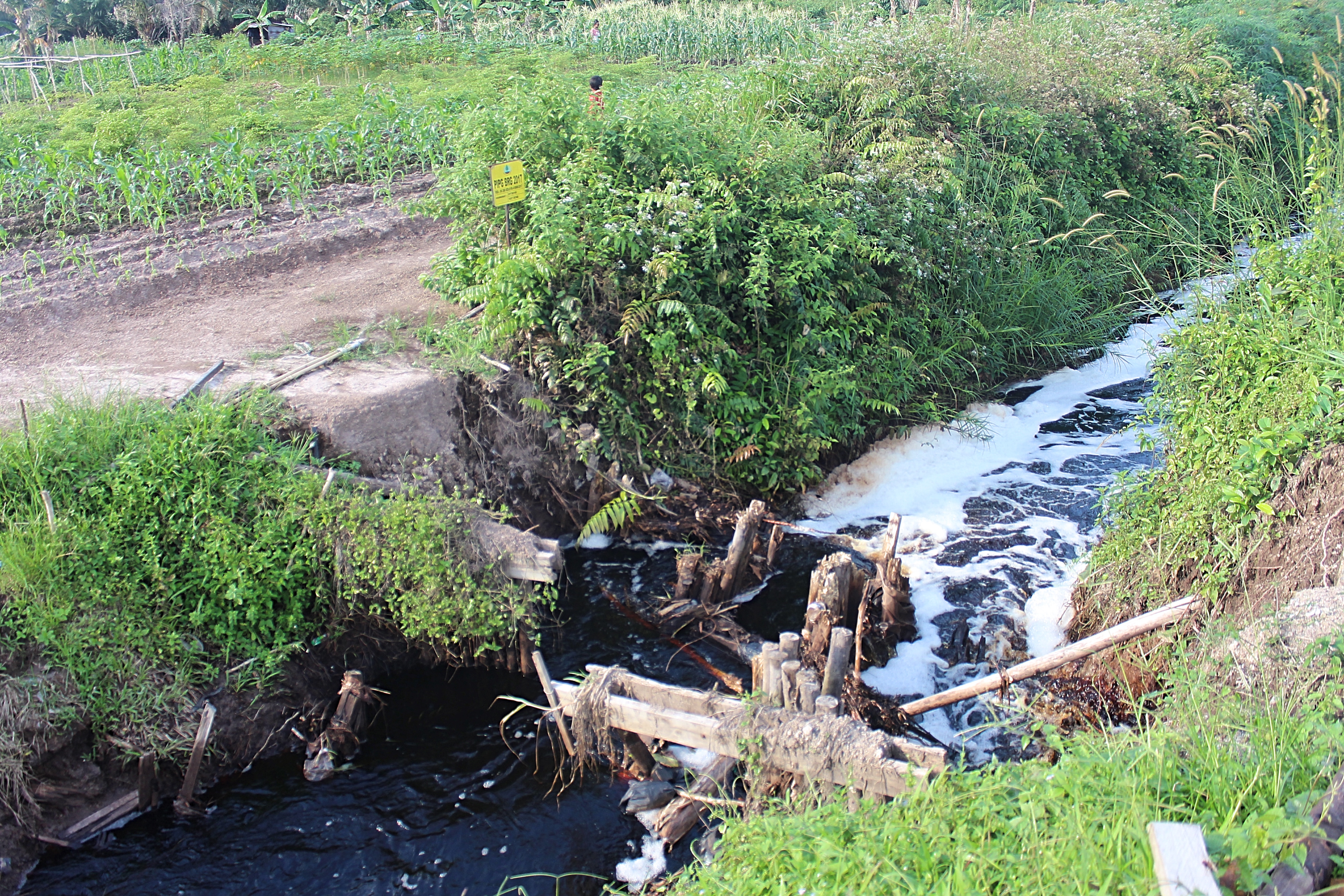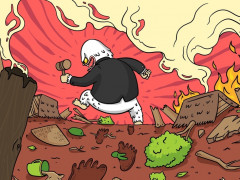The Harmful White
By AdminSmog-covered Dumai
The air pollution standard index posted on the Ministry of Environment and Forestry website shows 75 for the air quality in Dumai City, Riau, which means the medium category. But it was the number for 12 February 2019 and there has been no update. Conditions on the ground have worsened. Smoke from forest and land fires has covered the city and made visibility reduced to only about 100 meters on Thursday, 21 February 2019.
Several areas in Dumai have been hit by forest and land fires since the beginning of the year. The National Disaster Management Agency (BNPB) recorded 843 hectares of land was burned in Riau from 1 January to 18 February 2019. Of this total, 117 hectares of burned land are located in Rokan Hilir District; 43.5 hectares in Dumai City; 637 hectares in Bengkalis District; 20.2 hectares in Meranti District; 5 hectares in Siak District; 14 hectares in Kampar District; and 16 hectares in Pekanbaru City.
One of the contributors to the smoke in Riau is the repeated forest and land fires in Medang Kampai Subdistrict, Dumai City. Medang Kampai Subdistrict is one of the target areas for the peatland restoration program by the Peat Restoration Agency (BRG), an agency formed in 2016 to coordinate the restoration of 2 million hectares of peatland. This restoration is expected to reduce the risk of recurring severe forest and land fires, such as the one in 2015. Unfortunately, the restoration program in Medang Kampai has not shown a significant impact to prevent peatland fires.
Medang Kampai has a peat forest ecosystem and is very prone to fire because there is a lot of idle land or land that is not managed properly. Some time ago, Kaliptra Andalas, which is part of the Simpul Jaringan Pantau Gambut Riau, conducted monitoring in Guntung Village and Teluk Makmur Village in Medang Kampai.
In 2016, BRG made a contingency plan for rewetting which included a plan to build 8,827 canal blocks and 1,716 drilled wells in Riau in 2017. The Kaliptra Andalas team overlaid the restoration map and the rewetting infrastructure construction plan. The result showed that there were plans to build 5 canal blocks and 16 drilled wells in Guntung Village as well as 22 canal blocks and 69 drilled wells in Teluk Makmur Village.
However, when they went directly to the field, the Kaliptra Andalas team did not find the canal blocks and drilled wells in Guntung Village and only found 12 canal blocks in Teluk Makmur Village.
The Kaliptra Andalas team asked the residents if they knew any information regarding drilled wells and canal blocks for the restoration program. According to Misri, who was once the head of the Community Group (Pokmas) and is now the head of the Firefighting Community (MPA), the residents of Guntung Village had questioned the problem of why their village did not get any canal blocks although they had also experienced land fires in 2015. Unfortunately, Misri said that Guntung Village is not a fire-prone area based on BRG’s study.
Guntung Village is included in the Peat Care Village (DPG) program from BRG. Several programs have been implemented in this village, but the physical one is limited to a mini demonstration plot covering an area of 1 hectare for 2017. The demonstration plot is located at Neighborhood Unit 02, Parit Ibrahim Street, Guntung Village, about 2 km from the settlements. 15 residents manage this demonstration plot and planted pineapples as a short-term crop and matoa as a long-term crop. The distance factor makes the residents unable to regularly maintain this demonstration plot, in addition to the fact that they also have to work for their own livelihoods. Until now, the pineapple plants have not produced fruit and cannot be harvested.
Meanwhile, the team found several damaged canal blocks in Teluk Makmur.
The monitoring team observed that the cause of the damage was the wooden construction that did not match the size of the river so that the walls could not hold the water flow. As a result, there was a drought downstream of the canal which was very detrimental to the community who grow secondary crops, such as corn, spinach, water spinach, and peanut.
From their conversations, the Kaliptra Andalas team saw that the community had a good view and appreciation for the peat restoration efforts carried out in Guntung and Teluk Makmur Villages. However, they hope that efforts to prevent forest and land fires through wetting activities can be carried out by considering the impact on their social and economic life.





